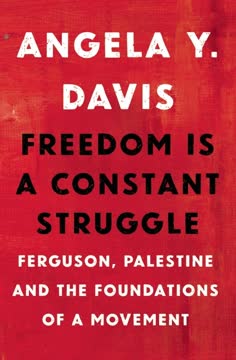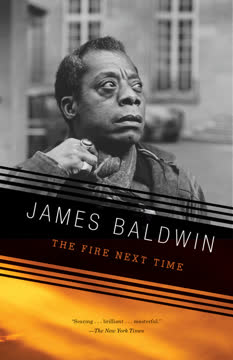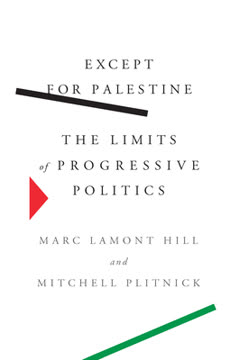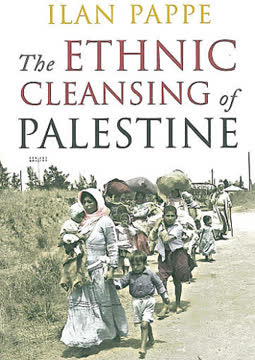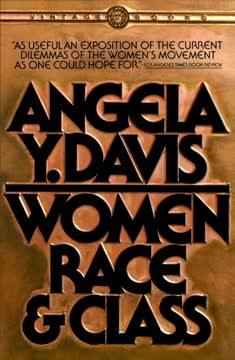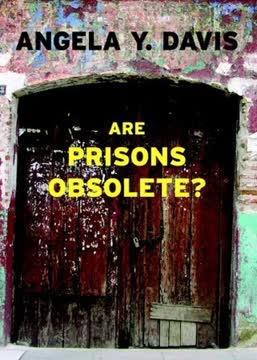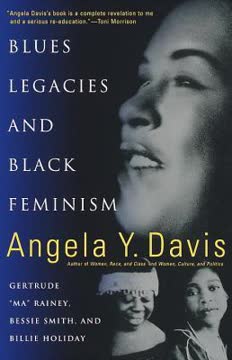Key Takeaways
1. Collective Struggle, Not Individual Heroes, Drives Freedom
It is essential to resist the depiction of history as the work of heroic individuals in order for people today to recognize their potential agency as a part of an ever-expanding community of struggle.
Challenge individualism. Progressive movements must counter the capitalist ideology of individualism by emphasizing collective power. Media often focuses on figures like Nelson Mandela or Martin Luther King Jr., detaching them from the vast networks of comrades and ordinary people who were the true engine of change. This focus on individual heroes obscures the potential for collective agency today.
Movements are built together. True progress comes from organized, sustained collective action, not from waiting for or relying on charismatic leaders. The civil rights movement, for example, was propelled by countless women and men, particularly Black women domestic workers, whose collective refusal and organizing were foundational, even if their names are less known than the movement's male figureheads. Recognizing this collective history empowers contemporary activists.
Community is key. Finding reservoirs of hope and optimism requires building and participating in communities of resistance. Neoliberalism pushes people into individualistic thinking, but it is in collectivities that people find the strength and vision to challenge oppressive systems and imagine a better future.
2. Racist State Violence is a Persistent, Structural Legacy
Racism persists in a framework that is far more expansive, far vaster than the legal framework.
Deep historical roots. State violence against Black people and people of color is not new; it originates in colonization and slavery, predating the civil rights era. Practices like slave patrols are echoed in modern policing and vigilante actions, demonstrating a continuous stream of violence embedded in the nation's history. Legal changes, while important, did not eradicate this deeply entrenched structural racism.
Beyond individual acts. Focusing solely on prosecuting individual police officers for killings like those of Michael Brown or Eric Garner is insufficient. These are not isolated incidents but symptoms of systemic issues. Racism is embedded in institutions—police, military, healthcare, education—and operates regardless of the individual identities of those in power, as seen in South Africa post-apartheid or in police forces led by people of color.
Militarization and stereotypes. Contemporary police violence is exacerbated by the militarization of local police departments, often trained with tactics used in military contexts abroad, including Israel. This is coupled with persistent stereotypes linking Blackness to criminality, a legacy of slavery that continues to fuel racial profiling and prejudice, making ordinary actions dangerous for people of color.
3. The Prison-Industrial Complex is Modern Slavery Profiting from Oppression
The global prison-industrial complex is continually expanding, as can be seen from the example of G4S.
Profit from punishment. The prison-industrial complex is a vast, growing system that profits from incarceration. Companies like G4S demonstrate how private corporations insinuate themselves into various aspects of the security state, from prisons and immigrant detention centers to checkpoints and school security, turning punishment and control into lucrative businesses. This system requires bodies to maintain profitability.
Warehousing social problems. Mass incarceration serves as a strategy to deflect from underlying social issues like racism, poverty, unemployment, and lack of education. Instead of addressing these root causes, society warehouses disproportionate numbers of Black people, people of color, immigrants, and those with mental health issues, making the prison a false solution that consolidates the state's failure to address pressing problems.
Historical continuity. The prison-industrial complex has roots in post-slavery systems like the convict lease system, which managed free Black people through forced labor and incarceration. Today, it continues to disproportionately target people of color, functioning as a modern form of slavery that extracts profit from their captivity and labor, often for minor offenses or simply for representing social problems.
4. Intersectionality Reveals the Interconnectedness of Struggles
Insisting on the connections between struggles and racism in the US and struggles against the Israeli repression of Palestinians, in this sense, is a feminist process.
Beyond single issues. Intersectionality, rooted in Black feminist thought and activism, recognizes that race, class, gender, sexuality, nationality, and other categories are inseparable in shaping social worlds and experiences of oppression. It emerged from the need to understand how Black women, for example, faced simultaneous racism and sexism, arguing that one struggle could not be prioritized over the other.
Connecting movements. The concept extends beyond individual identities to the intersectionality of struggles themselves. Understanding the links between anti-racist movements in the US (like Ferguson) and anti-colonial struggles (like Palestine) is crucial for building effective global movements. These connections reveal shared tactics of repression (militarized policing, tear gas) and structural complicity (US support for Israel, Israeli training of US police).
A methodology for analysis. Intersectionality provides a framework for analyzing complex systems of power and oppression, revealing how seemingly separate issues are intertwined. It challenges narrow frameworks and encourages activists to see their specific concerns (e.g., prison abolition) as connected to broader fights against racism, capitalism, imperialism, and other forms of injustice, requiring a comprehensive approach.
5. Transnational Solidarity is Essential for Global Justice
Just as the struggle to end South African apartheid was embraced by people all over the world and was incorporated into many social justice agendas, solidarity with Palestine must likewise be taken up by organizations and movements involved in progressive causes all over the world.
Shared experiences of oppression. Struggles for freedom are interconnected across national borders. Historical examples like the Black freedom movement inspiring African liberation struggles, or global solidarity supporting anti-apartheid efforts, demonstrate this mutuality. Today, connections between movements like Ferguson and Palestine highlight shared experiences of state violence and repression, fostering a sense of political kinship.
Mutual learning and support. Transnational solidarity involves mutual learning and support, not just one group offering aid to another. Palestinian activists tweeting advice on tear gas to Ferguson protesters is a powerful example of this reciprocal relationship. Movements in the Global North have a responsibility to challenge their own governments' roles in bolstering repressive regimes abroad.
Building a global movement. Making issues like Palestine a central part of global social justice agendas, rather than a marginal concern, is vital. Just as the anti-apartheid movement became a global cause, solidarity with Palestine needs to be embraced by diverse movements worldwide. This requires making connections palpable and visible, helping people see these struggles as their own, not just someone else's.
6. Beyond Civil Rights: The Need for Systemic Transformation
Freedom is more expansive than civil rights.
Civil rights are insufficient. While legal victories like the Civil Rights Act were crucial, they did not achieve full freedom. Focusing solely on acquiring formal rights within the existing system overlooks the need for substantive rights—jobs, housing, healthcare, education—and fails to challenge the fundamental structures of racism and capitalism that persist. The narrow focus on civil rights can create a false sense of closure, suggesting the struggle is over.
Addressing root causes. True transformation requires addressing the deep-seated economic, social, and ideological structures that perpetuate inequality and violence. This means moving beyond demands for individual accountability or legal reforms to demanding systemic change, such as community control of the police, demilitarization, and dismantling the prison-industrial complex.
Historical lessons. The period of Radical Reconstruction after slavery, though brief, showed the potential for fundamental change, including Black political representation and public education for all. Its violent overthrow and erasure from history demonstrate the resistance to deep transformation and highlight that issues unresolved in one era (like the 1860s) resurface in later ones (like the 1960s and today).
7. Feminism as a Methodology for Understanding and Challenging Norms
Feminism must involve a consciousness of capitalism... and racism, and colonialism, and postcolonialities, and ability, and more genders than we can even imagine, and more sex-ualities than we ever thought we could name.
Beyond gender equality. Feminism, particularly Black and women-of-color feminisms, is not just about gender equality but serves as a methodology for understanding complex systems of oppression. It insists on analyzing the intersections of race, class, gender, sexuality, and other factors, revealing how they are intertwined in shaping experiences and institutions.
Challenging norms. Feminist approaches challenge what is considered "normal," including the gender binary and the assumption that systems like prisons are inevitable or natural. By examining the experiences of those most marginalized, like trans women of color in the prison system, feminism illuminates the violence inherent in normative structures and reveals the need for radical transformation.
Personal is political. The feminist adage "the personal is political" highlights the deep relationality between individual experiences and larger systems. It shows how state violence and retributive justice are replicated in personal interactions and emotional responses. This insight is crucial for understanding how oppressive systems are reproduced and for developing strategies that link personal transformation with systemic change.
8. Abolition, Not Just Reform, is Necessary for True Security
I do think that a society without prisons is a realistic future possibility, but in a transformed society, one in which people’s needs, not profits, constitute the driving force.
Reform perpetuates the system. The history of prisons is a history of reform, but reform has only ever created "better" prisons and expanded the reach of carceral systems. Focusing on reform distracts from the fundamental problems and allows the institution of imprisonment to continue growing and profiting.
Imagining a different world. Prison abolition is not a utopian fantasy but a call to imagine and build a transformed society where people's needs are prioritized over profit. It requires addressing the social problems that lead to incarceration—racism, poverty, lack of education and healthcare—and developing alternative approaches to harm and conflict, such as restorative or transformative justice.
Security redefined. True security does not come from policing and incarceration, which often reproduce violence. An abolitionist framework seeks a different kind of security based on community well-being, addressing root causes of harm, and creating institutions that support human flourishing rather than relying on punishment and control.
9. Grassroots Organizing and Leader-Full Movements Forge the Future
I don’t see why things would be any different today.
Power from below. Historically, significant social change has come from mass movements and grassroots organizing, not from governments or individual leaders. The civil rights movement forced reluctant politicians to act through sustained protest and collective action. This remains true today; progress depends on organized mass movements.
Leader-full, not leaderless. Contemporary movements, like those sparked by Ferguson, demonstrate new models of leadership. They are not leaderless but "leader-full," with diverse individuals and groups contributing to strategy and direction. This challenges traditional, often male-centric, charismatic leadership models and recognizes the historical role of women and marginalized groups in organizing radical movements.
Sustaining momentum. Spontaneous responses to injustice are important, but they must evolve into organized, continuous movements to achieve lasting change. The groundwork of organizing, consciousness-raising, and building connections between different struggles is essential for transforming moments of protest into sustained forces capable of challenging deeply embedded systems of oppression.
Last updated:
FAQ
1. What is "Freedom Is a Constant Struggle" by Angela Y. Davis about?
- Intersection of Struggles: The book explores the interconnectedness of global struggles against oppression, focusing on movements like Ferguson in the U.S. and the fight for Palestinian liberation.
- Essays and Conversations: It is a collection of interviews, speeches, and essays by Angela Y. Davis, edited by Frank Barat, that discuss the foundations and evolution of social justice movements.
- Themes of Solidarity: Davis emphasizes the importance of transnational solidarity, collective action, and the dangers of capitalist individualism.
- Focus on Abolition: The book delves into prison abolition, Black feminism, and the critique of state violence, linking these to broader anti-capitalist and anti-colonial efforts.
2. Why should I read "Freedom Is a Constant Struggle" by Angela Y. Davis?
- Insight from a Renowned Activist: Angela Y. Davis is a leading voice in social justice, and her reflections offer deep historical and contemporary analysis.
- Understanding Intersectionality: The book provides a clear framework for understanding how race, gender, class, and global politics intersect in struggles for freedom.
- Practical Movement Lessons: Readers gain practical advice on organizing, building movements, and sustaining activism in the face of systemic oppression.
- Global Perspective: It connects local issues like police violence in the U.S. to global struggles, making it essential for anyone interested in international solidarity.
3. What are the key takeaways from "Freedom Is a Constant Struggle"?
- Collective Action Over Individualism: Real change comes from collective movements, not from focusing on individual leaders or heroes.
- Intersectionality Is Essential: Effective activism must address the interconnectedness of race, gender, class, sexuality, and nationality.
- Abolition as a Vision: The book advocates for the abolition of prisons and the reimagining of justice beyond punitive systems.
- Transnational Solidarity: Building links between struggles (e.g., Ferguson and Palestine) strengthens movements and challenges global systems of oppression.
4. How does Angela Y. Davis define and advocate for intersectionality in "Freedom Is a Constant Struggle"?
- Beyond Identity: Davis frames intersectionality as not just about individual identities, but about the intersection of struggles and systems of oppression.
- Historical Roots: She traces intersectional thinking to movements like the Third World Women’s Alliance and her own work in "Women, Race, and Class."
- Movement Building: Intersectionality is presented as a methodology for organizing, ensuring that movements are inclusive and address multiple forms of injustice.
- Global Application: Davis extends intersectionality to connect anti-racist, feminist, and anti-colonial struggles across borders.
5. What is Angela Y. Davis’s critique of capitalist individualism in "Freedom Is a Constant Struggle"?
- Dangers of Individualism: Davis argues that capitalist societies promote individualism, which undermines collective action and solidarity.
- Media Narratives: She critiques how media often sanctify individual leaders (like Mandela or MLK) while erasing the collective nature of movements.
- Movement Agency: Emphasizing collective agency helps people see themselves as part of a broader community of struggle, not just as isolated actors.
- Resisting Historical Distortion: Davis insists on recognizing the collective subject of history to empower current and future activists.
6. How does "Freedom Is a Constant Struggle" connect the struggles in Ferguson and Palestine?
- Shared Experiences of Oppression: Davis draws parallels between police violence in Ferguson and Israeli state violence against Palestinians.
- Militarization of Policing: She highlights the exchange of military tactics and training between U.S. and Israeli police forces.
- Solidarity in Action: The book documents how activists in Palestine and Ferguson supported each other, including sharing advice on resisting tear gas.
- Globalizing the Struggle: Davis argues that understanding these connections is crucial for building a truly global movement for justice.
7. What is Angela Y. Davis’s vision of prison abolition in "Freedom Is a Constant Struggle"?
- Abolition as Realistic: Davis asserts that a prison-free society is possible, but only within a transformed, justice-oriented society.
- Critique of Reform: She explains that prison reform often just creates "better" prisons and expands the system, rather than challenging its existence.
- Addressing Root Causes: Abolition requires tackling underlying issues like racism, poverty, lack of education, and mental health.
- Abolitionist Advocacy: Davis encourages integrating abolitionist demands into broader movements for education, healthcare, and anti-racism.
8. How does "Freedom Is a Constant Struggle" address Black feminism and its role in social movements?
- Interconnected Oppressions: Black feminism, as defined by Davis, insists that race, gender, and class are inseparable in understanding oppression.
- Beyond Binary Choices: The book rejects the idea that activists must choose between fighting racism or sexism, advocating for an integrated approach.
- Feminism as Methodology: Davis sees feminism as a way of thinking and organizing, not just as a movement for women.
- Leadership and Inclusion: She highlights the importance of Black women’s leadership and the need for movements to be inclusive of all genders and sexualities.
9. What is the significance of G4S and the prison-industrial complex in "Freedom Is a Constant Struggle"?
- G4S as a Global Actor: Davis exposes G4S as a transnational corporation profiting from prisons, security, and surveillance worldwide, including in Palestine.
- Linking Systems of Oppression: The company’s involvement in prisons, immigrant detention, and apartheid walls illustrates the global reach of the prison-industrial complex.
- Profit Motive: She argues that the expansion of incarceration is driven by profit, not public safety or justice.
- Call to Action: Davis supports the BDS movement and calls for boycotting companies like G4S as part of the struggle against both mass incarceration and Israeli apartheid.
10. How does Angela Y. Davis discuss the importance of transnational solidarity in "Freedom Is a Constant Struggle"?
- Learning from Each Other: Davis emphasizes that movements must share experiences and strategies across borders to be effective.
- Historical Examples: She references solidarity between the U.S. Black freedom movement and anti-apartheid struggles in South Africa, as well as current links to Palestine.
- Intersectionality of Struggles: Transnational solidarity is framed as an extension of intersectionality, connecting different forms of oppression globally.
- Building a Global Movement: Davis argues that only by forging these connections can activists challenge the global systems of capitalism, racism, and colonialism.
11. What practical advice does Angela Y. Davis offer for activists and movement-building in "Freedom Is a Constant Struggle"?
- Organize Collectively: Davis stresses the need for well-organized, mass movements rather than reliance on charismatic leaders or spontaneous protests.
- Sustainability and Inclusion: She advocates for building sustainable, inclusive movements that welcome diverse participants and perspectives.
- Strategic Use of Electoral Politics: While critical of mainstream parties, Davis suggests using electoral arenas as organizing spaces, not as ends in themselves.
- Optimism and Community: She encourages activists to find hope and resilience in collective action and community, even when victories seem distant.
12. What are some of the most powerful quotes from "Freedom Is a Constant Struggle" and what do they mean?
- "Freedom is a constant struggle." – This phrase, drawn from a freedom song, encapsulates the ongoing, unfinished nature of the fight for justice.
- "It is in collectivities that we find reservoirs of hope and optimism." – Davis highlights the importance of community and collective action in sustaining activism.
- "We must be willing to embrace the long walk toward freedom." – Echoing Mandela, she reminds readers that liberation is a long-term process requiring perseverance.
- "Abolitionist advocacy can and should occur in relation to demands for quality education, for antiracist job strategies, for free health care, and within other progressive movements." – This quote underscores the interconnectedness of abolition with broader social justice goals.
Review Summary
Freedom is a Constant Struggle receives mostly positive reviews for its insightful analysis of interconnected global struggles and social justice issues. Readers appreciate Davis's perspectives on racism, feminism, prison abolition, and international solidarity. Some find the book's structure repetitive due to its compilation of speeches and interviews. Many praise Davis's eloquence and passion, though a few desire more in-depth exploration of certain topics. Overall, reviewers commend the book for its thought-provoking content and relevance to contemporary social movements, despite some critiques of its format and depth.
Similar Books
Download PDF
Download EPUB
.epub digital book format is ideal for reading ebooks on phones, tablets, and e-readers.
